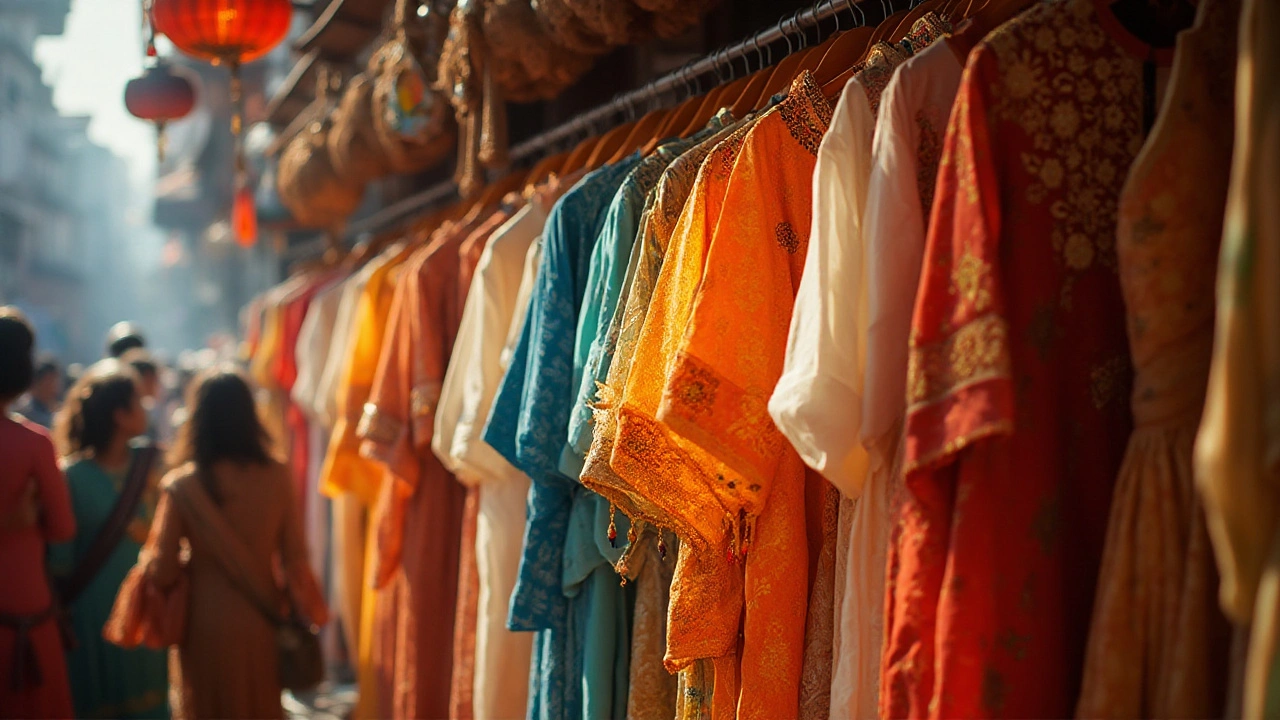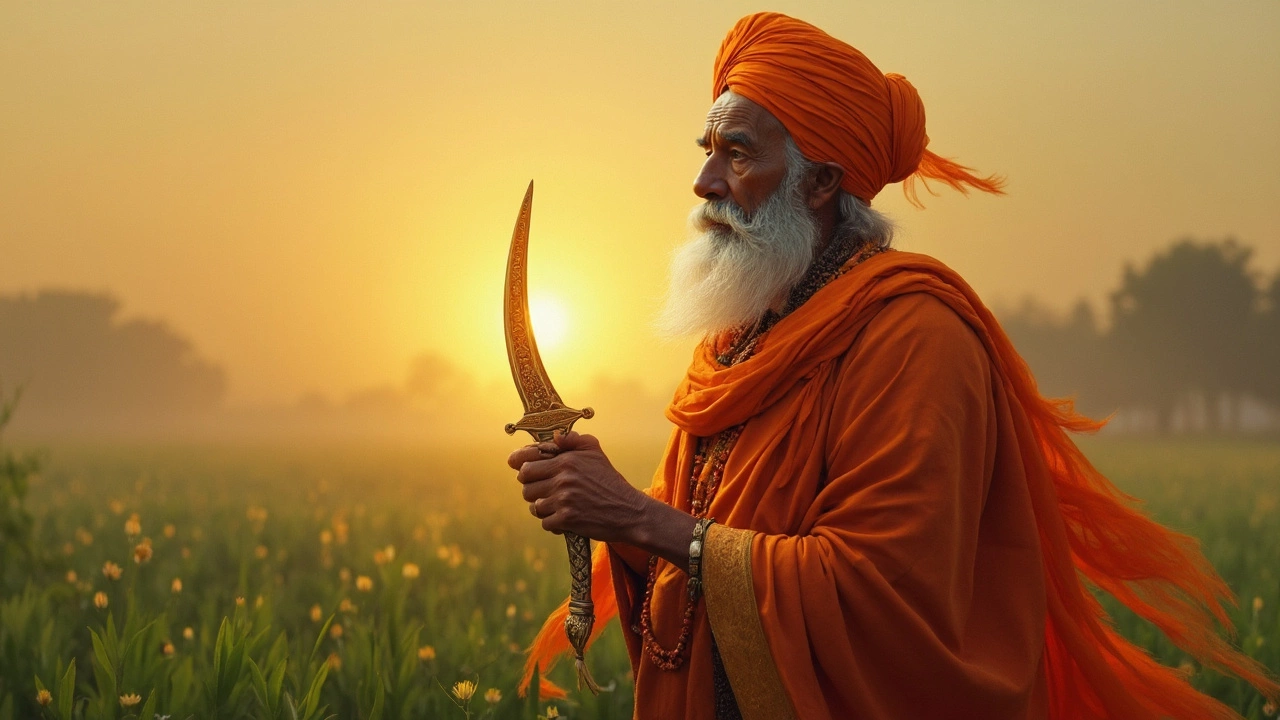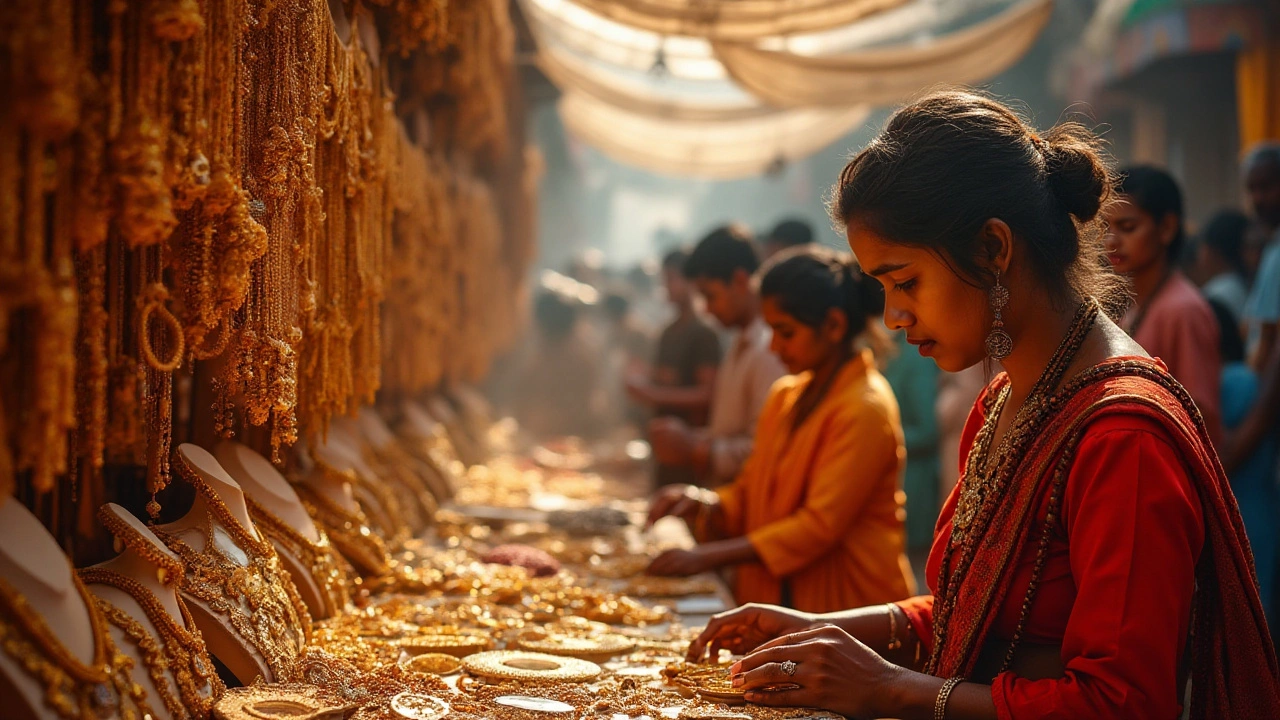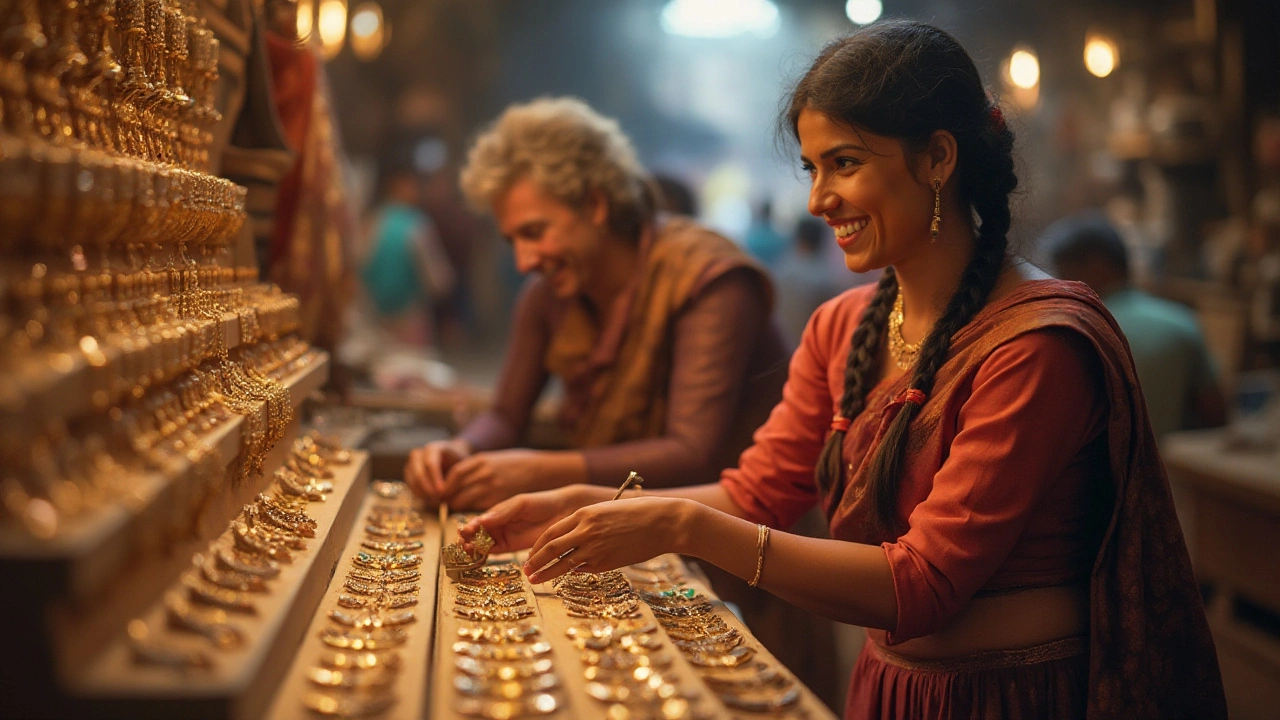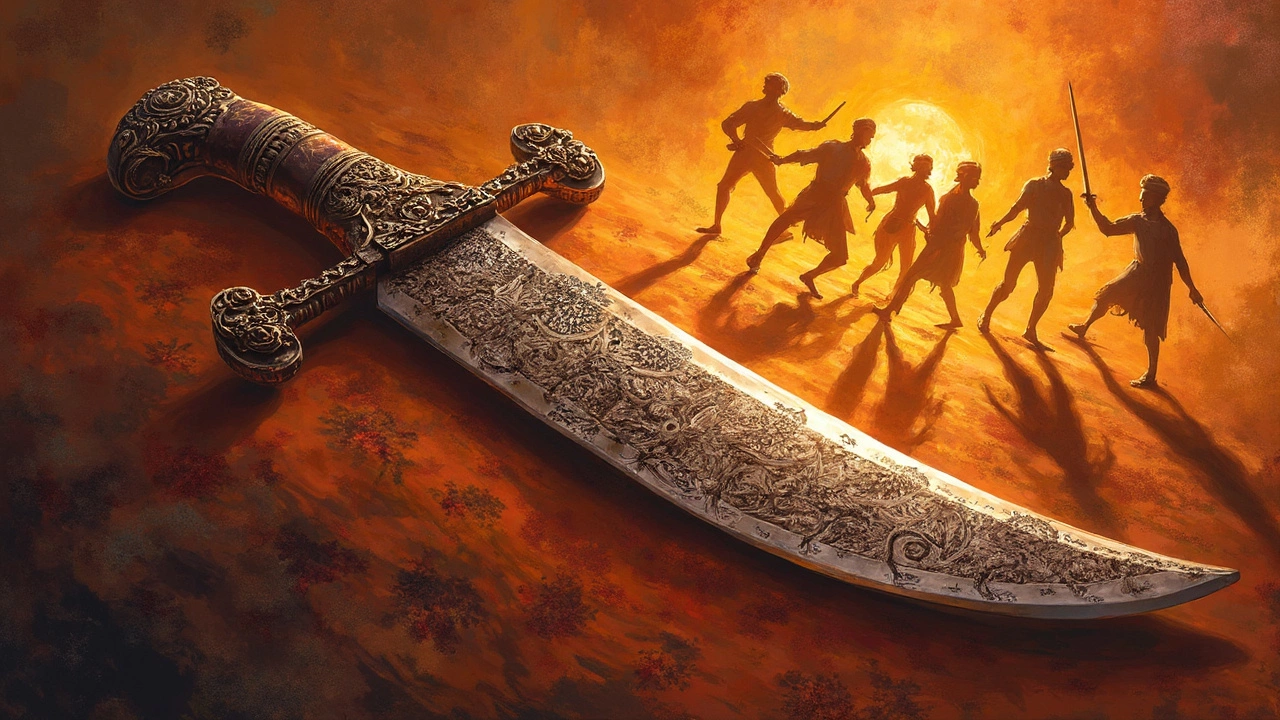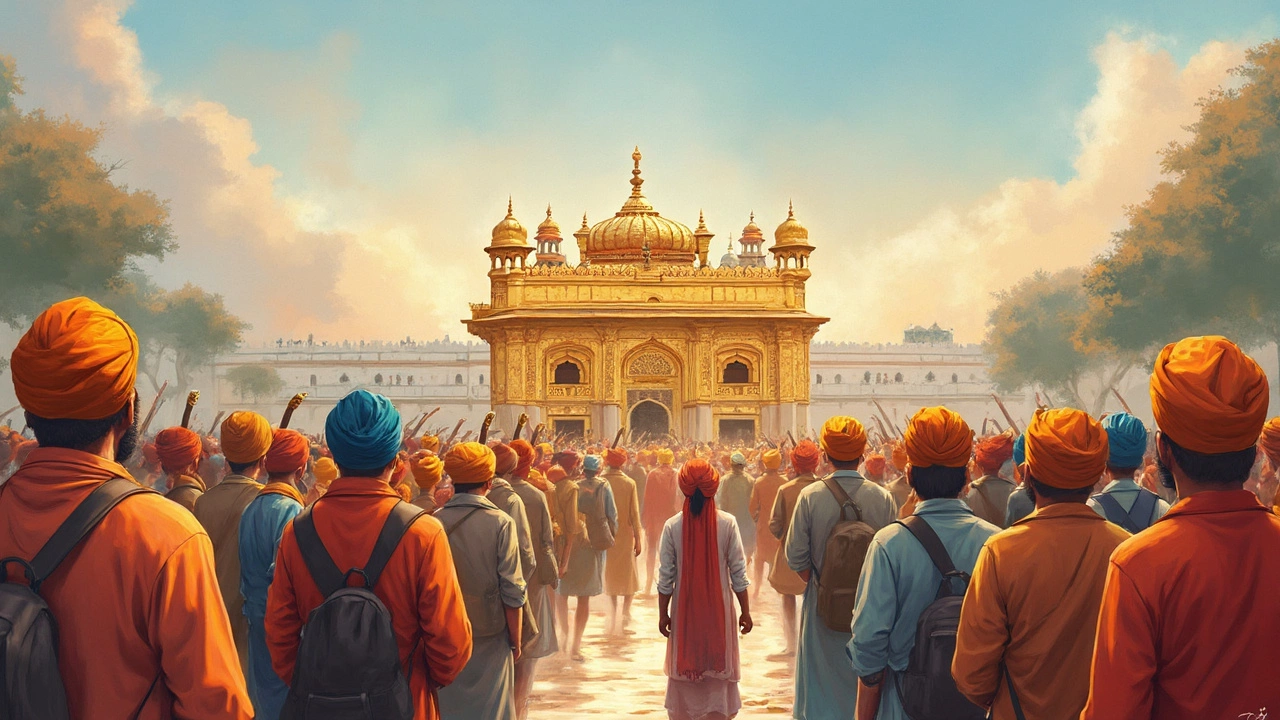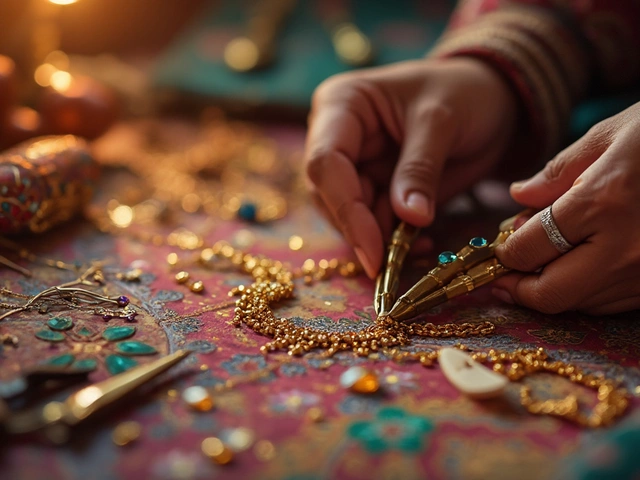January 2025: What RH Jewellers Shared About Indian Jewellery
If you’re curious about what’s hot in Indian jewellery right now, you’ve come to the right spot. In January 2025 we rolled out a mix of cultural deep‑dives, style guides, and practical advice. From why the mangalsutra stays a bedtime debate to which gold works best for temple pieces, each post aimed to answer a real question you might have.
Highlights from the month
We started the month with a look at the mangalsutra. One article asked whether you should take it off while you sleep, weighing tradition against comfort. Another explored the meaning of black beads in mangalsutra designs, showing how they’re believed to protect against negative energy.
Gold lovers got a two‑part guide on temple jewellery. First, we explained the best type of gold to buy for those richly detailed pieces – focusing on purity, durability and the classic yellow hue that makes Indian temple gold stand out. Then we dived into the power of the stones often set in temple designs, from ruby reds to emerald greens, and why collectors still prize them.
Bangles had their moment too. One post broke down the three main styles – glass, metal and lac – and offered tips on caring for each type. We also answered a common question: can unmarried women wear traditional bangles? The answer highlighted how modern fashion is reshaping old rules while still respecting cultural roots.
Nose rings weren’t left out. A piece compared American nose‑ring trends with Indian preferences, showing how styles have crossed borders and what designs are currently most popular.
For the vintage‑hunter, we posted a guide on spotting authentic antique pieces and a look at the most coveted vintage jewellery items, from Art Deco to Victorian styles. We even covered the oddball topic of what 3D printers can’t make in jewellery, reminding makers that some details still need a skilled hand.
Practical tips you can use today
Want to keep your gold looking fresh? Store it in a soft cloth pouch, avoid harsh chemicals, and clean it with a mild soap solution – no need for expensive polishing services.
If you’re buying a mangalsutra for the first time, check the clasp and bead quality. A solid gold clasp and evenly sized black beads usually signal good craftsmanship.
Thinking about adding a nose ring? Choose a hypoallergenic material like surgical steel or gold, and let a professional piercer handle the insertion to reduce infection risk.
When picking bangles, match the material to the occasion. Glass bangles work for festive events, while silver or gold bangles suit everyday wear and can double as heirloom pieces.
Finally, if you love vintage styles but worry about fakes, look for hallmark stamps, consistent wear patterns and a reputable seller. Authentic pieces often have a story etched into the metal.
That’s the roundup for January 2025. Whether you’re after cultural insight, style advice, or buying tips, the posts aim to make your jewellery journey easier and more enjoyable. Keep checking back – we’ll keep sharing the stories and tricks that keep Indian jewellery shining bright.
Top Shirt Brands Popular in India for Style Enthusiasts
India, known for its vibrant fashion industry, hosts a myriad of shirt brands catering to diverse styles and preferences. From traditional designs to modern cuts, the country's brands offer a variety of choices. Popular names include Raymond, Park Avenue, and Van Heusen, among others. With India's unique blend of heritage and contemporary fashion, these brands continue to mark their presence both nationally and globally. Explore the trends and offerings of these leading shirt brands.
Understanding the Kirpan: A Symbol of Peace and Non-Violence
Discover the spiritual meaning of the Kirpan and its role in embodying non-violence within Sikhism. This article explores the historical background of the Kirpan, its symbolic significance, and practical aspects related to its use. Learn why it remains a vital emblem of peace and protection for Sikhs around the world today.
Kirpan and the Five Ks of Sikhism: What You Need to Know
The Kirpan is a significant symbol in Sikhism, serving as one of the Five Ks that Khalsa Sikhs are expected to uphold. This article delves into the history and meaning of the Kirpan, its cultural significance, and how it fits into modern Sikh identity. Understanding the Kirpan can provide deeper insights into Sikh values and spirituality. Practical tips on wearing and respecting this important religious artifact are also discussed.
Is the Jewelry Market Overflowing? Insights into Jewellery Making Kits
The jewelry industry, a realm sparkling with creativity and artistry, beckons many aspiring creators. With the burgeoning interest in handmade and custom pieces, the availability of jewelry making kits has snowballed, inviting anyone with an artistic flair to dive in. This article explores whether the market is saturated, assessing the opportunities and challenges upcoming jewelry enthusiasts might face. Discover intriguing facts and actionable tips for navigating this glimmering field and making a mark in it.
Is It Legal to Carry a Kirpan? Global Laws You Should Know
The Kirpan, a ceremonial dagger carried by Sikhs, raises questions about its legality worldwide. Laws differ significantly across countries, ranging from restrictions in public spaces to exemptions for religious reasons. Understanding these legal frameworks is vital for Sikhs practicing their faith. This article explores how different nations address the carrying of a Kirpan, providing useful insights for anyone navigating these regulations.
Exploring Popular Nose Job Types and Nose Pin Designs
In the intricate world of aesthetics, nose jobs, commonly known as rhinoplasty, have gained fame for enhancing facial harmony. People often opt for nose pins as an alternative to surgery for a subtle aesthetic enhancement. These trends revolve around altering nasal contours through surgical means or decorative wear. The distinction between functional and cosmetic nose jobs offers a breadth of choices for those considering aesthetic or corrective modifications.
Kirpan: A Symbol of Spiritual Non-Violence
The kirpan, a ceremonial dagger carried by initiated Sikhs, is rich in spiritual symbolism and lessons on non-violence. Unlike typical weapons, the kirpan represents a profound dedication to justice, compassion, and protection of the weak. This article delves into the spiritual meaning behind the kirpan and its unique role in promoting peace within the Sikh faith. Understand the historical context, core principles, and daily practices associated with this sacred symbol.
Exploring the Challenge of Luxury Brand Popularity in India
Luxury brands struggle to capture the Indian market despite the growing consumer base. Many factors, including cultural values, economic disparities, and local brand preferences, play a role in this phenomenon. By understanding the unique landscape of India's consumer habits and preferences, brands can strategize better to tap into this potentially lucrative market. Knowing the challenges allows for innovative approaches in marketing and product offerings. This article delves into the dynamics shaping the luxury market in India.
Understanding the Kirpan: A Symbol of Sikh Values
The Kirpan is a ceremonial sword that forms a significant part of Sikh identity. This article delves into its symbolism, historical roots, and its connection to the values of justice, courage, and self-defense. It also dispels common myths and offers insights into its modern-day relevance. Learn how this sacred symbol is integrated into Sikh life and its broader cultural significance.
Understanding Mangalsutra Traditions: Should You Remove It During Sleep?
In many South Asian cultures, the mangalsutra is not just a piece of jewelry; it holds deep cultural and spiritual significance. This article explores whether it is advisable to remove the mangalsutra while sleeping, balancing tradition with personal comfort. Learn about the symbolic importance of the mangalsutra in marital life and get practical tips for maintaining it. Discover the blend of age-old customs and modern practices as married women navigate these cherished traditions today.
Kirpan: Perspectives from Around the World
Explore how different countries perceive the Kirpan in public spaces. Understand cultural perspectives and legal considerations for Sikhs carrying the Kirpan globally. This article sheds light on both acceptance and challenges faced by Sikhs with their sacred dagger in diverse nations, offering insights for travelers and those interested in cultural practices.
Kirpan and Religious Freedom: Navigating Legal Debates
Kirpan, a ceremonial dagger carried by baptized Sikhs, becomes a centerpiece in debates over religious freedom and legal rights. While it's a symbol of faith, it also raises safety concerns when carried in public spaces. This article explores the legal battles and rights related to Kirpan, examining how different countries balance religious expression with public safety. By understanding these complexities, we can appreciate the varying perspectives on this important issue.
